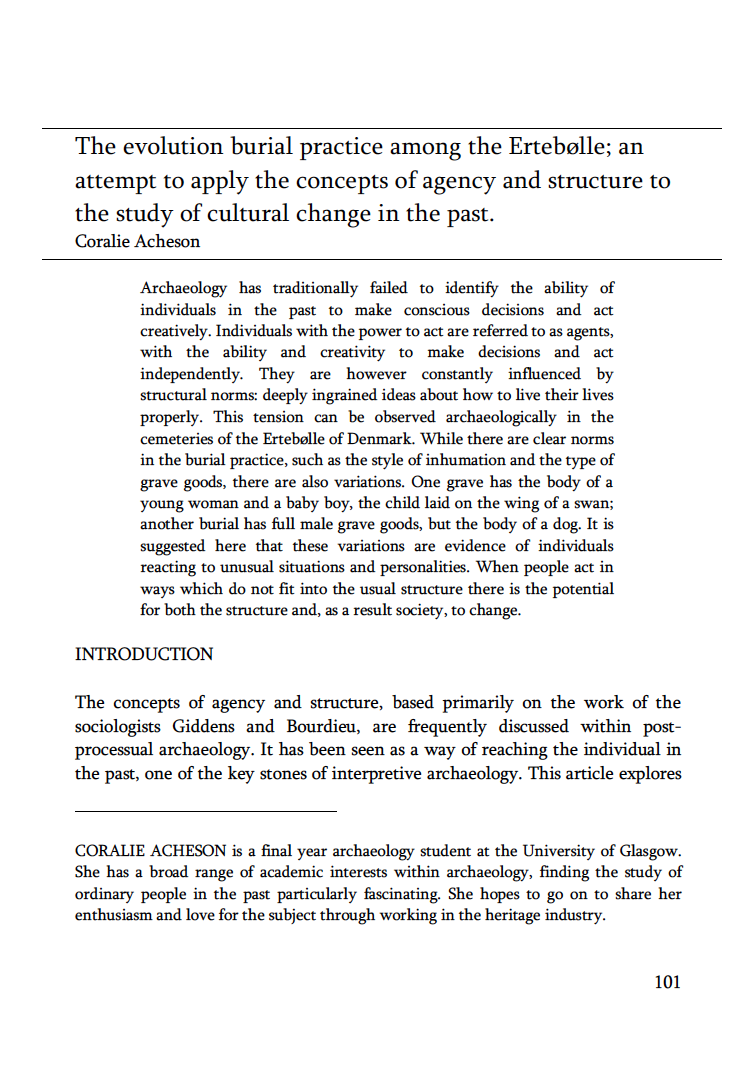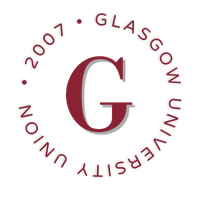The evolution burial practice among the Ertebølle
an attempt to apply the concepts of agency and structure to the study of cultural change in the past
DOI:
https://doi.org/10.36399/GroundingsUG.3.260Keywords:
Ertebølle, Denmark, Archaeology, Anthropology, Agency, Norms, Variations, Burial Practices, IndividualismAbstract
Archaeology has traditionally failed to identify the ability of individuals in the past to make conscious decisions and act creatively. Individuals with the power to act are referred to as agents, with the ability and creativity to make decisions and act independently. They are however constantly influenced by structural norms: deeply ingrained ideas about how to live their lives properly. This tension can be observed archaeologically in the cemeteries of the Ertebølle of Denmark. While there are clear norms in the burial practice, such as the style of inhumation and the type of grave goods, there are also variations. One grave has the body of a young woman and a baby boy, the child laid on the wing of a swan; another burial has full male grave goods, but the body of a dog. It is suggested here that these variations are evidence of individuals reacting to unusual situations and personalities. When people act in ways which do not fit into the usual structure there is the potential for both the structure and, as a result society, to change.

Downloads
Published
Issue
Section
License
Copyright (c) 2010 Coralie Acheson

This work is licensed under a Creative Commons Attribution 4.0 International License.
The CC BY 4.0 license is a Creative Commons license. This is a non-copyleft free license that is good for art and entertainment works, and educational works. It is compatible with all versions of the GNU GPL; however, like all CC licenses, it should not be used on software. People are free to: Share — copy and redistribute the material in any medium or format; Adapt — remix, transform, and build upon the material for any purpose, even commercially. The licensor cannot revoke these freedoms as long as you follow the license terms. But they must conform to the following terms: Attribution — You must give appropriate credit, provide a link to the license, and indicate if changes were made. You may do so in any reasonable manner, but not in any way that suggests the licensor endorses you or your use. No additional restrictions — You may not apply legal terms or technological measures that legally restrict others from doing anything the license permits.
Please check individual article PDF copies to see if any additional restrictions apply.







